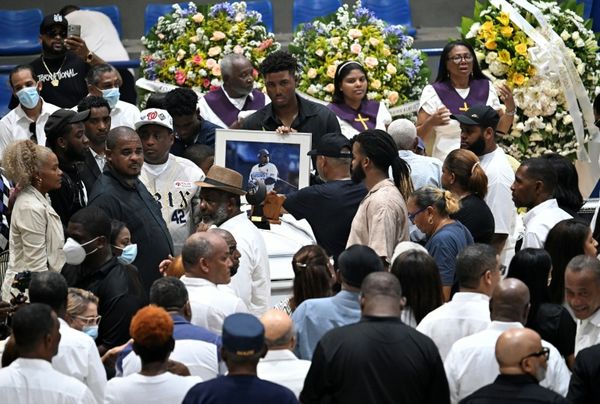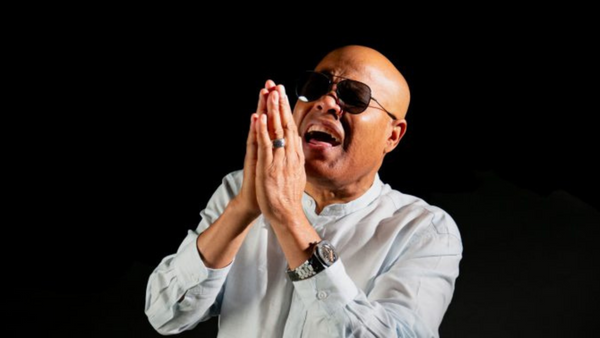
Mitul Baruah, who teaches sociology, anthropology and environmental studies, was born and raised in Assam’s Majuli, one of the largest river islands in the world. His recent book, Slow Disaster, shines a light on the challenges faced by residents of the island, from flooding, riverbank erosion to displacement, and the role of the state. Excerpts from an interview:

The Brahmaputra river and its challenges have been written about, but you were born and raised at Majuli, what are you highlighting in your book?
The scholarship on the environmental crises facing the Brahmaputra Valley has been highly inadequate, overlooking some of the major aspects of the hazardscape. My book is an attempt to advance this literature. Slow Disaster presents an ethnographic account, of how the twin processes of flooding and riverbank erosion have reconfigured the Majuli landscape, and by extension the Brahmaputra Valley. Such an ethnographic study helps us gain an in-depth understanding of the unfolding of the disasters on the ground, how people’s everyday lives are reshaped in the process, and how they cope with such disasters. Being a native of Majuli, I was also able to combine ethnography with my personal insights on the island.

Why do you call it ‘slow disaster’?
Through the story of Majuli, the book offers a conceptual framework of “slow disaster” — disasters that are incremental, accretive and non-spectacular. Unlike catastrophic events like a tsunami or an earthquake, slow disasters take place in a quiet, everyday manner, often unnoticed. In Majuli, the devastations have been enormous — in terms of the loss of landmass (roughly 600 sq. km. within the course of the 20th century), displacement and migration of families, and the collapse of traditional livelihoods. Yet none of these have been dramatic; rather they have taken place over a long period of time, slowly and quietly. The book argues that slow disasters require a careful spatio-temporal analysis.
Can you describe Majuli as it is now?
Majuli today looks quite different from what it was a few decades ago. Believed to be the largest river island in the world, it remains largely rural and agrarian. However, traditional livelihoods, including agriculture, have suffered significantly due to regular flooding and the loss of land to erosion. Many villages, wetlands, and satras (Vaishnavite monasteries) that were constitutive of the island’s identity have now disappeared from the landscape. Migration of rural youth to big cities (both within and outside Assam) in search of jobs has also gone up in recent years.
At the same time, since its recognition as a district in 2016, Majuli has witnessed a rapid growth of infrastructural projects — concrete roads, bridges, office buildings and resorts. Commercial activities and tourism are also on the rise. Similarly, cultural activities have gained a new momentum, especially to boost the case for Majuli’s recognition as a UNESCO World Heritage Site (the Archaeological Survey of India has nominated the island for this). Thus, what we see in Majuli today are two parallel processes: on the one hand, there’s a steady, albeit slow, deepening of vulnerabilities among riverside communities; on the other, “development” activities seem to have gained traction, and so has the process of cultural rejuvenation. Only time will tell how the two processes will balance themselves out.

What are the people of the island saying?
I call the people of Majuli extraordinary storytellers because of their almost lyrical description of things around them, including the crises facing them. They have a story to tell about everything — the river, the long boat journeys to sell pottery, the adventures of fishing, the water buffaloes, the otters and ghost stories, life during flood and erosion, and much more. Some of them are so animated and dramatic in their storytelling that they leave me completely awestruck. Sometimes I wonder if storytelling is also a coping mechanism for this disaster-weary population.
What is the role of the state?
The book presents an in-depth analysis of the role of the state in the production of disasters in Majuli. It pays attention to the questions of hydraulic infrastructure, the embankments in particular, as well as everyday functioning of the state, bureaucratic arbitrariness, and the nexus between the state and various non-state actors.
What are some of the key issues you have noticed during your field work at Majuli?
There were many, and it’s probably impossible to list them all. Let me highlight a few key ones:
First, although I was aware of the adverse impacts of embankments, it was only during my fieldwork that I witnessed how the embankments have indeed rendered the Majuli landscape vulnerable to flooding and erosion. Also, prior to this research, I had no idea that the local people, especially those living by the river, were so averse to the embankments. In fact, some of my interlocutors in Majuli referred to the embankments as the “weapons of death.” Second, I was surprised to see that riverside families facing erosion and displacement were highly keen on resettlement outside the island. Third, it was a delight to see the deep ecological knowledge that the islanders possessed, and the strong connections — material, cultural and spiritual — that they shared with the local ecologies. Finally, the fieldwork also exposed me to many facets of local politics in Majuli. It particularly helped me understand the cracks, conflicts, and tensions within the local population and how these have prevented a radical politics of a mass movement on the island.
A family you mention in the book describe themselves as aghoris (nomads) — some families have been displaced more than 12 times in a short span because of the river erosion. What is the way out?
That’s a big question and there are no easy answers. However, the immediate way out is to rehabilitate the displaced families, provide them with compensation and alternative livelihoods. In the long run, it calls for better governance of the river, and flood and erosion control measures that are carefully thought out, democratic, and appropriate to the local environment. Such measures should be based on new epistemologies that incorporate local, traditional knowledges/wisdom. Furthermore, we must urgently begin a conversation on how to live in such a fragile, hazardous geography — things we should do and things that must be avoided.
How have political moves and government policies reshaped lives and local ecologies?
I have discussed at length the role of the state in reshaping lives and local ecologies in Majuli. A huge part of it is about the dominant flood and erosion control measures — that is, through embankments and cognate infrastructures — which are essentially a colonial legacy. These infrastructures have failed to achieve their intended goals and instead produced a whole range of unintended risks. Additionally, the agrarian policies and directions of the state, increasingly modelled after the Green Revolution, have rendered the rural population much more vulnerable.
At the same time, the state has not done enough to rehabilitate the displaced families. Currently, there are over 10,000 displaced families on the island, many of whom have been residing by the embankment for decades. During my fieldwork, some of these people referred to themselves as “forgotten citizens.”

In recent years, the state and the local political elite seem to be preoccupied with the issue of the UNESCO World Heritage Site for Majuli even as the real crises of flood and erosion, crises that are so immediate for the riverside communities, seem to have taken a backseat. More recently, the bridge over the Brahmaputra connecting Majuli with Jorhat, currently at the initial stage of construction, seems to have occupied the centrestage of all conversations on the island. We need to reorient the discourses and environmental imaginations in Majuli.
Slow Disaster: Political Ecology of Hazards and Everyday Life in the Brahmaputra Valley, Assam ; Mitul Baruah, Routledge, kindle price $52
sudipta.datta@thehindu.co.in







